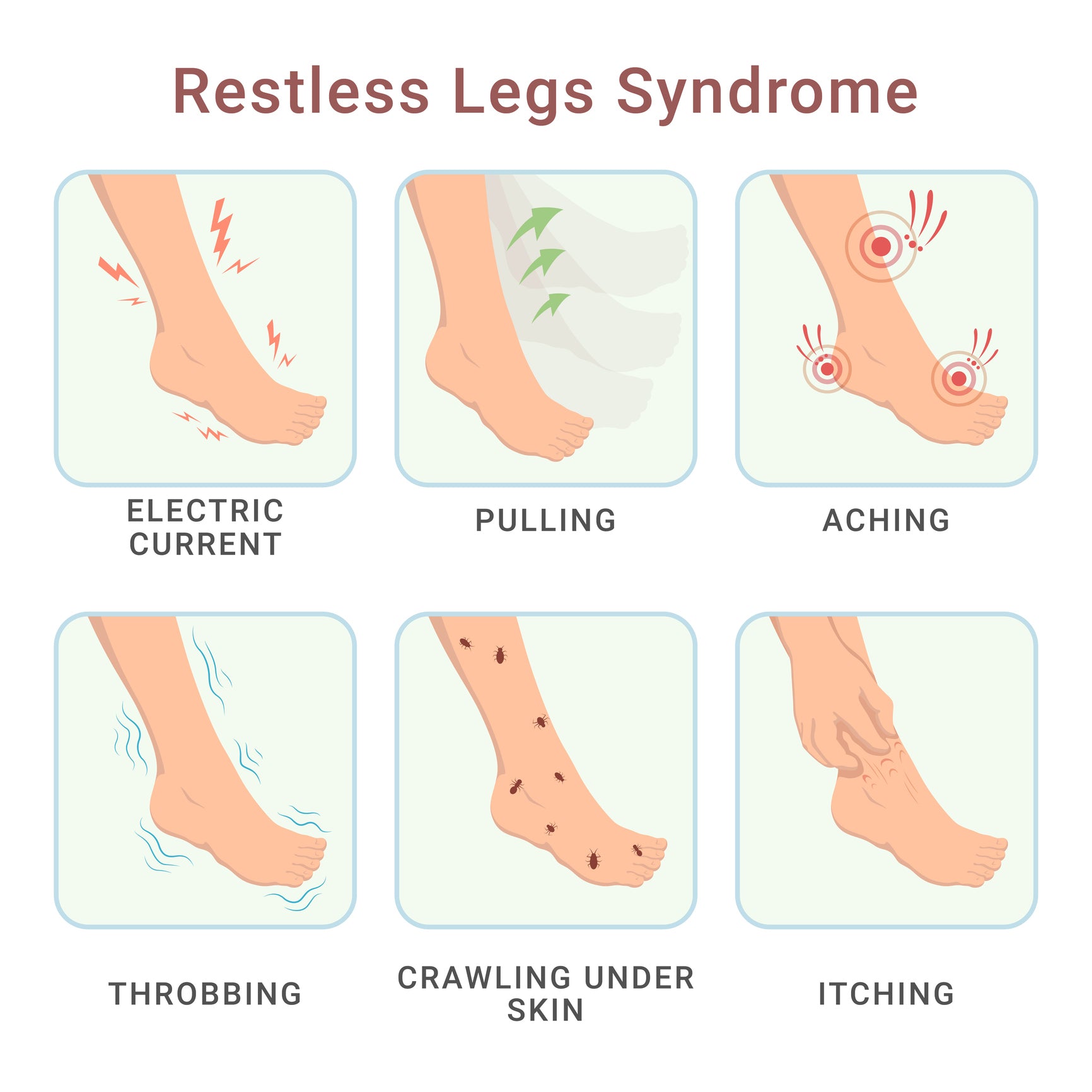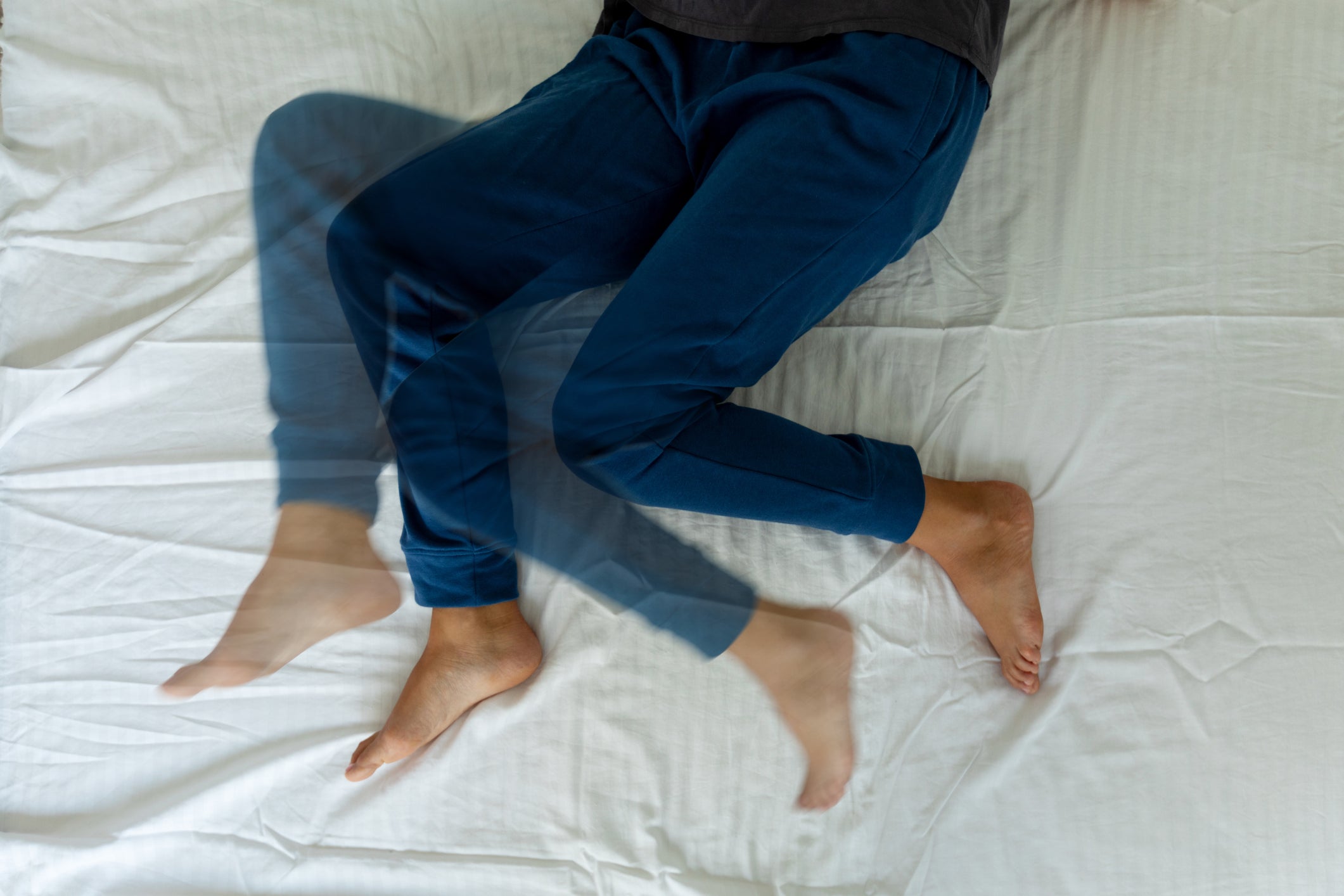What is Restless Legs Syndrome (RLS)?

April 01, 2024
777 views
From primary RLS to secondary RLS, read more about its causes, impact on wellbeing and more.
Restless Legs Syndrome - Symptoms
Have you ever experienced an uncontrollable urge to move your legs, especially during the evening or nighttime hours? If so, you might know about Restless Legs Syndrome (RLS), also known as Willis-Ekbom disease. This condition manifests as uncomfortable sensations in the legs, such as itching, crawling, pulling, aching, throbbing, or pins and needles. One might feel a powerful urge to move their legs, as movement helps alleviate any unpleasant feeling temporarily. For those affected, the sensations often intensify when sitting or lying down.

When Should You go to a Doctor for Restless Legs Syndrome?
There are a few signs that tell us if we should seek a doctor for RLS. First, individuals must experience an overwhelming urge to move their legs, often accompanied by uncomfortable or unusual sensations. Second, this urge must start or intensify with rest, distinguishing it from mere restlessness. Third, the urge must diminish or vanish entirely upon movement, providing temporary relief. Fourth, RLS symptoms typically exacerbate during the evening or night. Lastly, doctors must rule out other conditions such as leg cramps, arthritis, or muscle pains to confirm an RLS diagnosis, ensuring appropriate treatment strategies are pursued.
Primary & Secondary Restless Legs Syndrome
RLS may occur in two forms: primary/idiopathic or secondary. Primary RLS, also known as idiopathic RLS, refers to cases where the condition develops without any underlying medical condition. It's believed to have a genetic basis and often manifests earlier in life. Conversely, secondary RLS occurs as a result of some other medical condition or trigger, such as kidney failure or pregnancy. Management strategies may differ depending on whether the condition is primary or secondary RLS, making correct diagnosis crucial.
RLS is influenced by various factors. Chronic ailments such as iron deficiency, Parkinson’s disease, kidney failure, Diabetes, and Peripheral Neuropathy often coincide with RLS symptoms. Damage to the spinal cord may also increase the likelihood of developing RLS. Medications can play a role too, with certain drugs like anti-nausea medications, antipsychotics, and some antidepressants potentially worsening symptoms. Even over-the-counter medicines for cold and allergies containing antihistamines can contribute to discomfort.
Pregnancy can trigger RLS in some women, particularly during the final trimester, though symptoms typically subside postpartum. Lifestyle factors, including poor sleep quality or disorders like sleep apnea, as well as habits like alcohol, tobacco, and caffeine use, can exacerbate RLS symptoms. Genetics as mentioned also play a significant role in predisposing individuals to RLS.
Secondary RLS may arise from multiple underlying causes. Iron deficiency, often associated with Anaemia, stands as a prominent culprit, alongside conditions such as end-stage renal disease, Diabetes Mellitus, rheumatic disease, venous insufficiency, and Peripheral Neuropathy. Deficiencies in vital nutrients like folate or magnesium can also cause secondary RLS symptoms.

Complications of Restless Legs Syndrome
RLS is more commonly reported in women than men. While RLS can affect individuals of any age, it predominantly manifests in middle-aged or older adults. Although children can experience RLS, it is comparatively rare in this age group. Research suggests that roughly 2% of school-age children may exhibit symptoms of RLS, with a higher likelihood if they have a parent with the condition. RLS presents a multifaceted challenge, impacting various aspects of individuals' lives as they navigate its symptoms. The repercussions extend beyond mere physical discomfort, encompassing profound effects on mental well-being and daily functioning. Insomnia, depression, and fatigue often accompany RLS. As individuals age, the severity of RLS tends to escalate, culminating in significant disruptions to sleep patterns and decreased daytime alertness, particularly by age 50.
RLS presents many symptoms and challenges for those affected. Whether it's primary or secondary, the condition can significantly disrupt daily life, impacting both physical comfort and mental well-being. From the urge to move your legs to potential complications like insomnia and depression, RLS requires careful diagnosis and management. Understanding the various triggers and factors contributing to RLS, from genetics to lifestyle habits, is crucial for effective treatment. A potential treatment for RLS could be cannabinoid therapies, given the limitations of current treatments. By seeking appropriate medical guidance and support, people can better manage their symptoms and improve their quality of life. If you or anyone you know might be suffering from RLS, get a free consultation with a doctor here.

